Drawing with pastel crayons
Chalk pastels, or soft pastels, are a lesser known material that you should try at least once. Unfortunately, museums do not often show drawings in pastel chalk. To give you an idea of the fantastic results that can be achieved with it, a few examples of (by chance all French) artists:

Odilon Redon

Alexandre Nozal
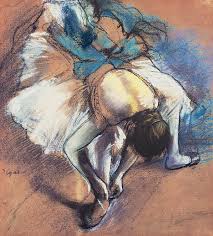
Edgar Degas

Victor Prouvé
What do you need to work with chalk/soft pastels?
Soft pastels come in very different price ranges, from a box (24 pieces) of the Action for € 2.95, to € 3.80 for a single stick of Unison Color. Generally, the cheaper brands have less deep colors, and the chalks are harder, presumably because there is more binder in it. The chalk of the Action is an exception to this. You can also buy chalk pastels in pencil form, with the advantage that you do not get dirty fingers and can work more precisely.
Paper: not too smooth and not too gritty. This can be difficult to find and also depends on your taste. The chalk pigment does not stick to very smooth paper and that is therefore not suitable. Paper with a too coarse structure makes it very difficult to get a uniform color, you have to rub the granules of pigment into the paper with great difficulty. Colored paper, in a color that fits your subject, or contrats it, is ideal. I personally am still looking for a “fluffy” paper. Do you understand what I mean and do you know where I can buy it in different colors? Leave a comment and I am eternally grateful.
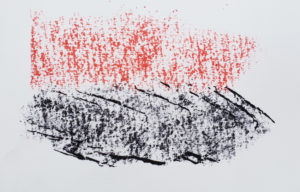
pastels on too coarse paper
Furthermore, a kneadable eraser is useful (Faber Castell is a nice brand) to erase details without damaging the paper. If you do not want to rub the pigments with your fingers all the time because your skin gets dry, there are several options: the paper stump is a tightly rolled paper stick with a tip. I find the stumps slightly less pleasant to work with because the stump is dry and your finger is a bit greasy, hard to explain but that makes a difference. The paper stumps can be cleaned by sanding them on a foot file. You can also use cotton swabs and brushes to rub the chalk.
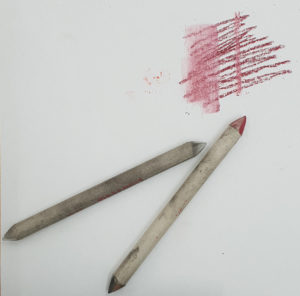
paper stumps
Finally fixer spray, meant to fix your drawing. Some people use hair spray because it is cheaper, the only drawback is that your drawing smells like hair spray for years. Fixing spray is, as far as I know, only for sale in art supplies stores and costs around € 10 for an aerosol can.
How do you make a drawing with pastel chalk?
Pastel chalk is a dry powdery material, and when you press it too hard, only part of the chalk adheres to the paper; the rest you can sweep up: sin. It is better to first gently chalk, with the flat side or with the tip of the chalk, and then rub with finger, feather, cotton swab or whatever you like. This is the first layer. Are you satisfied with this bottom layer and important: do not you erase (!) More than you can already fix this layer. You lay a second and perhaps third layer over this first layer. For the last details you can use a pastel pencil. The combination of soft fuzzy parts and chalky lines makes a pastel-colored drawing fascinating to look at. For soft transitions you put two colors next to each other on paper, which you then rub together. Ideal for sunsets, round shapes, etc. Look that you do not go too far and ends with one big gray mass. And wash your hands in between. If you do not feel like walking to the sink every time, keep wet wipes handy.
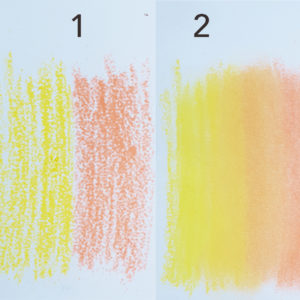
pastels before and after rubbing
Sometimes, with pastel chalk, you draw a surface with the intention of rubbing it out and not seeing any lines anymore, in order to discover that the chalk sticks too well, and you continue to see those lines. If you want to prevent this, it is first of all useful to keep a test sheet next to your work. In addition, the safest way to avoid unwanted streaks is to apply the chalk with your fingers. First rub the chalk with your finger, and then on the paper. Finger paints but then more subtly. This is a method for patient people.
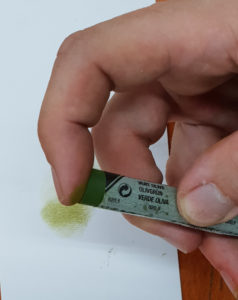
drawing with pastels using ones fingers
You can see pastels as a medium between drawing and painting; it offers, just like paint, the ability to mix colors on paper and on top of each other, but without the time pressure of drying paint, or the intervention of the brush. It is a direct material that you can also use well for expressive drawings.
When your drawing is finished, it may be necessary to apply 2 layers of fixer spray, and store it in a folder between (paper) paper.




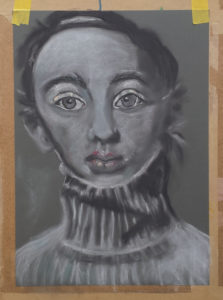
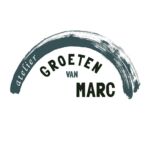


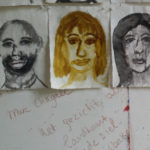
Leave a Reply
Want to join the discussion?Feel free to contribute!